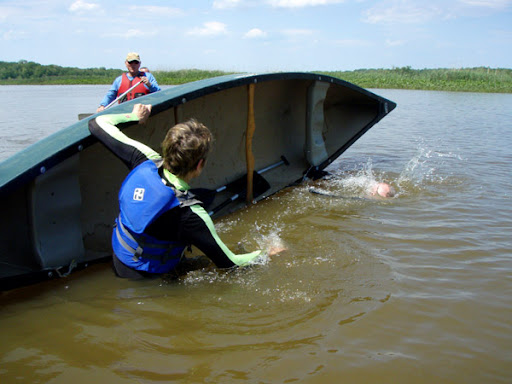
I was back at Jug Bay today to guide a public canoe trip. The entire group today was from one family having a family reunion. Most of the 19 participants were from out of state – including Florida, Texas, California. We had a great day for the trip with mostly sunny skies and temperatures in the low 70’s. After the general orientation, the morning trip headed up the Patuxent and into the Western Branch. We encountered plentiful wildlife including a black rat snake at the gear shack, a muskrat just after we set out, turtles, and a great northern water snake. The skies were filled with hunting osprey and great blue herons. Red-winged blackbirds flickered through the cattails. Just above Billingsley Landing on the Western Branch we encountered a downed tree that almost blocked the river. We did just manage to get past and on the upstream side we found a nasty collection of bottles, balls, and other trash that had been strained out by the tree. It was definitely a job for the Riverkeeper Roughnecks and I plan to send them an e-mail.
On the return trip we talked about the rich history of the river and stopped at Mt. Calvert at the confluence of the Western Branch and the main branch of the Patuxent. Since it was Saturday, the small museum in the 1780’s plantation house was open. The group was also fortunate to have Donald Creveling, archeology program manager with the Maryland National Capital Park & Planning Commission, on hand to tell us about site. The museum houses an exhibit on the confluence of three cultures that occurred on this hill overlooking the Patuxent – the Native Americans who inhabited the land for at least 8000 years, the Europeans who settled the area and built a town here in the 1683, and the enslaved Africans that they brought to these lands. Filled with thousands of artifacts unearthed in the surrounding fields, the museum is a gem of information on Maryland history from pre-Columbian times into the 20th century. The area is still an active archeological dig and we could see researchers digging on a rise overlooking the river about a half mile from the main house.




